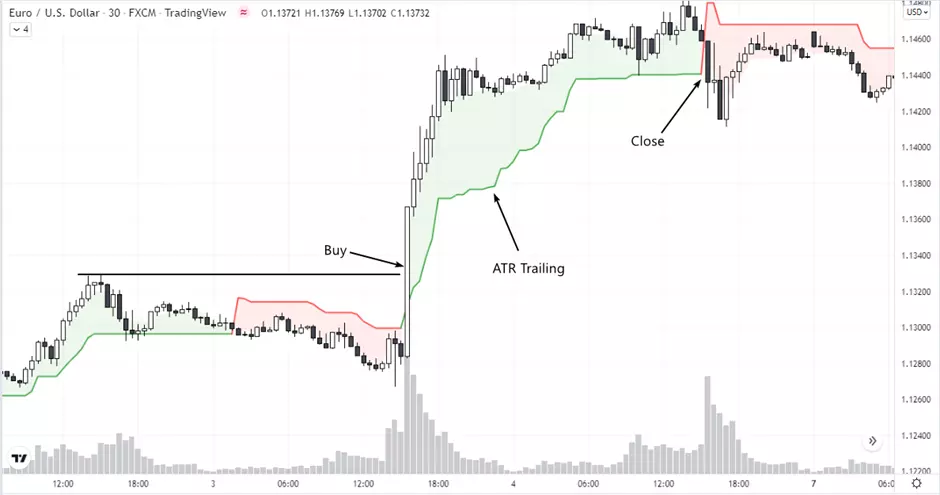Average True Range ATR Indicator Tutorial
Average True Range – A technical indicator that is designed to measure the volatility (or variation) of a financial instrument. Originally, it was intended for futures on raw materials, as During development (1978) on the US market for goods and raw materials were much more volatile than stocks .
Average True Range has not been developed in order to predict the direction of movement of the tool. Moreover, the average true range is not intended to make any forecast at all. The average true range is designed exclusively to describe the current volatility (volatility) of the instrument, and is made as an additional tool of technical analysis , which should be used only in combination with other technical indicators and overlays. In other words, the average true range – an auxiliary tool for the analysis of a financial instrument.
It is important to understand that, by virtue of the fact that the indicator is based on the calculation of absolute numbers, the value of the indicator will vary depending on the analyzed financial instrument . Those. for shares valued at 20 cents indicator will show some figures and actions for 400 UAH. – Other.
Moreover, in the long-term charts, if the price changes substantially during the period on the graph, the indicator can also be misleading and becomes incomparable. Consequently, the cost to use the average true range for comparison only within one tool , and that if the price of this tool does not change much.
Technical indicator of the average true range is unlikely to be as applicable in the technical analysis, such as Stochastic or alignments moving averages, but because average true range is used in other indicators and overlays , we can not do without it and know it – it is useful.
True Range (TR)
The concept of the true range is used in several technical indicators, including the average true range.
Recall that the true range – a majority of the following three differences:
Max – Min
Max – close before
Closed pre – Min
The calculation of the average true range
As with any indicator, the average true range is an importantoption: the period of calculation n. Typically, the average true range is taken in the period 14, but can take another period, depending on the requirements, preferences, policies , etc.
To fully calculate the value of the indicator, you must wait until the pass n periods, so that there is enough data to calculate. The indicator value may be obtained only from the time n. Between k (. Cat> n), ATR value will be equal to:
ATR k = [ATR k-1 · (n-1) TR + k ] / n
Right recursion question: how to calculate the value for the previous period of the ATR the k-1 , or even the 14th time? It’s very simple: in the period of n, that the first period with the full value of the indicator, the ATR value will be equal to the arithmetic average of the previous values of the TR. And the first TR is calculated as a difference between maximum and minimum during this period.
Example

The use of the average true range
It is important to remember that ATR is not a tool to forecast , and it is only a tool to describe the current situation (i,e. volatility). Therefore, this indicator should be used only as an auxiliary tool in your technical analysis.
The level of volatility, of course, can be very useful in the analysis, but it will give much smaller than, for example, the corridor of the Bollinger Bands .
Conclusion
A complex and not much needed technical indicator is the average true range (ATR) shows the level of variability of the analyzed instrument. It does not allow to predict anything, but merely used to describe the current volatility. Therefore, this indicator should be used in addition to other indicators. But it is worth remembering that this indicator is used to calculate certain other indicators, because it is necessary to get acquainted with him.